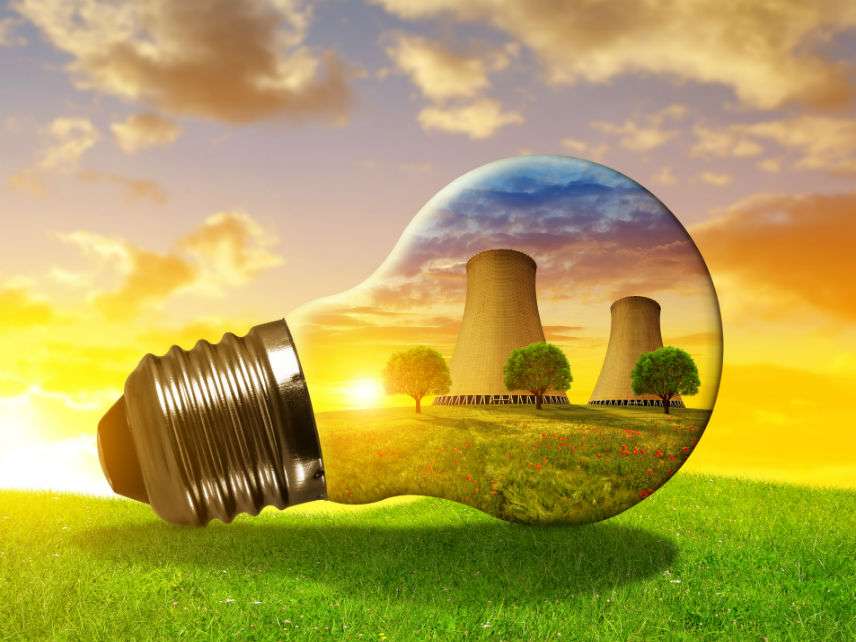More Wind and Solar Power Perversely Locks In Fossil Fuel Generation
Skip renewables for zero-carbon electricity and go directly to nuclear

Emissions of carbon dioxide from burning fossil fuels is contributing to the rise of average global temperatures. Assuming that man-made climate change could become a significant problem for humanity during this century, switching to zero-carbon energy technologies to generate electricity would help prevent some of the harms stemming from addtional warming.
Based on this chain of argument, many folks concerned about climate change are seeking to mandate the deployment of solar and wind power as replacements for the coal and natural gas currently used to generate most of the world's electricity. Will this work? No, argues Michael Shellenberger, President of Environmental Progress, over at Forbes. Contrariwise, he explains that the inherent variability of solar and wind will perversely "lock-in" fossil fuels making it harder and more expensive to "save the climate."
Why? Basically because power generators will have to build and maintain a parallel set of fossil fuel plants to supply energy to make up for shortfalls in renewable energy when the wind falters and the sun goes down. It's not quite the same thing as having to pay for and build two separate power generation systems, but it's closer than most advocates for renewable energy would like to acknowledge.
There is one exception to this necessary fossil fuel lock-in: carbon-free nuclear power. Like conventional fossil fuel generators, nuclear power plants could step in when renewables go dark, but without emitting the carbon dioxide that is contributing to man-made climate change. Shellenberger then makes what should be the next exquisitely obvious point: Since nuclear power is zero-carbon and can supply all the electricity as needed, why build any wind and solar electric power generation at all?
The case of Germany illustrates the point. While pursuing its famous Energiewende (energy transformation) the country has spent $222 billion deploying wind and solar power while simultaneously closing its nuclear power plants. The result is that its carbon dioxide emissions in recent years have been rising instead of falling.
But aren't nuclear power plants much more expensive than renewable sources of electricity? While it is true that the costs for wind and solar generation have been falling, it bears noting that even as renewable generation vastly expanded in Germany, consumers in that country are now paying twice what they did for electricity in 2000.
In contrast, China is building a number of new nuclear power plants at about one-third the cost of what can be done in over-regulated Europe or the U.S. Had ideological environmentalism not turned against nuclear energy in the 1970s, Australian economist Peter Lang calculates that nuclear power would likely have outcompeted most fossil fuel generation at one-tenth nuclear's current cost.
Given the technological and fiscal realities pointed out by Shellenberger, one can hope that the folks concerned about climate change will eventually give up their reactionary insistence on wind and solar power generation and instead support the deployment of new safer nuclear power generation technologies, such as molten salt thorium reactors, small modular reactors, and traveling wave reactors.


Show Comments (180)